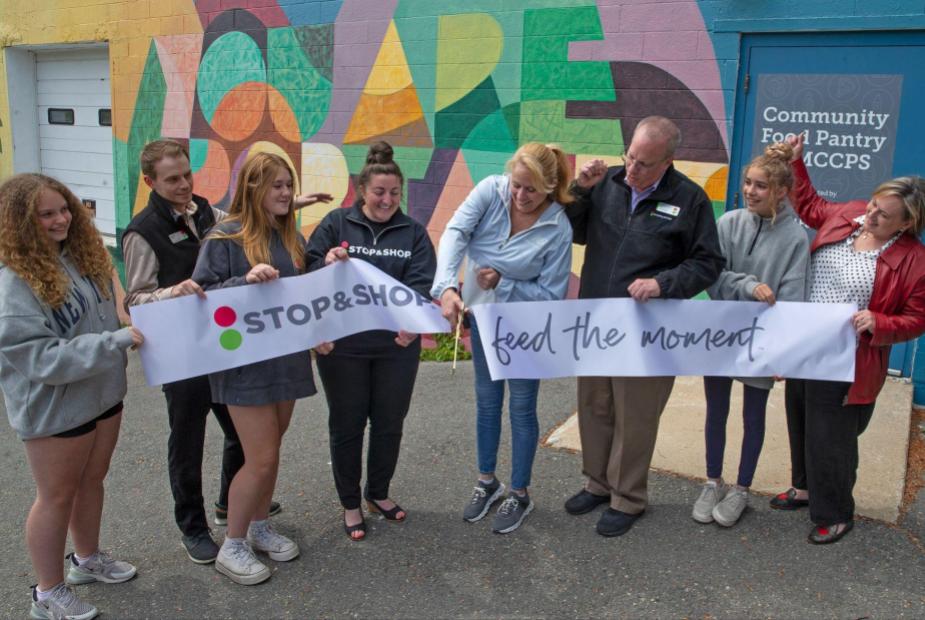Essex County Sheriff Coppinger sworn in for second term by Lt. Gov. Driscoll
During his second inaugural address, Essex County Sheriff Kevin Coppinger redefined the role of the state’s Sheriff’s Departments, saying the mission of these agencies goes beyond the “care, control, and custody” of inmates.
“Today, we ask why are individuals incarcerated, what were the root causes of their behavior that brought them to commit crime, and what types of services and treatment options can we offer during their time with us,” Sheriff Coppinger said. “The field of corrections today requires a balanced measure and approach, working hand-in-hand with law enforcement, the courts, social service providers, educators, community groups, families, and elected officials with the ultimate goal of providing the best in public safety for all.”
Coppinger was sworn-in to his second term Wednesday, Jan. 11 by Lt. Gov. Kimberley Driscoll in front of an audience of 250 at Lynn Classical High School. Driscoll thanked Coppinger for his positive years of service in law enforcement and his continued partnership.
“I believe the work of the Sheriff’s Department is critical to the safety of all our communities and the health and well-being of our neighbors who are also confined. Anyone who is in Middleton or spending time in the Sheriff’s care and custody, for the most part, is going to go back to our communities and I think no one recognizes or appreciates that more than Sheriff Coppinger,” said Driscoll. “In the role of sheriff, it certainly brings his service full circle — starting out protecting his community as a first responder, leading the City of Lynn’s Police Department, and now working as Sheriff to ensure folks connected with the criminal system come out of that particular role in that facility better prepared to navigate re-entry. That’s good for all of us, all of our communities, all of those individuals, and certainly the men and women who are working at the Sheriff’s Department.”
Coppinger said the key to his mission is programming, treatment, rehabilitation, and re-entry with an emphasis on education, vocation, and clinical services.
“Our goal is to develop individualized treatment plans that address those needs to the best of our abilities, given our budget, staffing, and space constraints. To be effective, these treatment plans must be developed with the individual’s eventual return to his/her community in mind. In other words, re-entry starts Day One,” Coppinger said. “I strongly believe that when inmates return to their communities they should return with a solid, well-defined aftercare plan in hand. Without one, they are doomed to failure along with a return to criminal behavior.”
The Sheriff pointed to five achievements of his first term geared at re-entry. They include the Clean and Sober Existence Unit (CASE) to help people beat addiction; the Medication Assisted Treatment Program (MAT), a national modeled program that provides medication and comprehensive clinical, medical, and discharge planning for those with substance use disorder; the Correctional Opportunities for Personal Enrichment (COPE), a specialized housing unit for those with mental illness that includes clinicians embedded in the unit to provide immediate care; and Correctional Alternatives for Re-Entry (CARE), a pre-trial diversion unit working closely with the courts, provides critical institutional programming while securing community-based services for those being released.
Coppinger also pointed to the Department’s new Supporting Transitions And Re-entry (STAR) program as a critical component to improving public safety in Essex County. This community-based program has over 125 community partners working to support a person’s re-entry by removing all impediments to a person’s success. This includes educational and vocational training, clinical support services, and drug treatment.
“I believe a Sheriff must support and be part of efforts throughout the county to keep people out of jail. If these needed services can be provided to individuals at critical times, prior to arrest, the goal is to direct the individual to the proper care providers which in many instances is not the courts, and thus not jail,” Coppinger said. “The result? Less crime, increased public safety, reduced inmate populations. A win-win-win for sure.”








